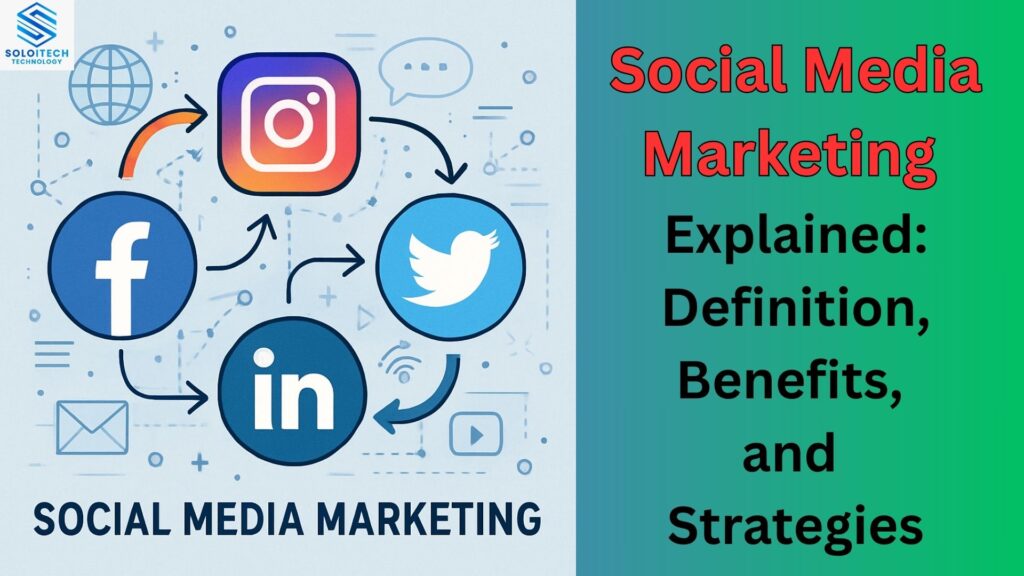In the digital age, social media has gone from being a way to connect with friends to one of the most powerful marketing tools out there. Businesses of all sizes now use platforms like Facebook, Instagram, TikTok, LinkedIn, and Twitter (now X) to connect with their audience, build brand awareness and drive sales.
This blog will walk you through what social media marketing is, the benefits, proven strategies and some fun facts about social media itself.
What is Social Media?
Social media refers to online platforms and applications where users can create, share and interact with content. It allows people to communicate, form communities and exchange information in real time. Popular platforms include:
- Facebook: To connect with friends, share updates, and join groups.
- Instagram: To share photos, videos, and stories.
- X (formerly Twitter): To share short text updates and trending topics.
- LinkedIn: For professional networking.
- TikTok: For short-form video entertainment and trends.
Social media can include text, images, videos, stories, live streams, and even audio chats. Its interactive nature allows two-way communication between individuals and brands, making it a powerful space for engagement.
How Many People Use Social Media?
Social media usage has exploded over the past decade. As of 2025:
- 5 billion people worldwide use social media, which is more than 60% of the global population.
- The average person spends 2 to 3 hours per day on social media.
- Younger generations are the heaviest users, but older demographics are also rapidly adopting these platforms.
These massive user numbers are why brands are moving large chunks of their marketing budget to social media
How Social Media Affects Mental Health
While social media has many benefits, it also has mental health implications, both positive and negative.
Positive impacts:
- Keeps people connected across distances.
- Provides communities for support and shared interests.
- It can boost self-expression and creativity.
Negative impacts:
- Social comparison can lead to feelings of inadequacy.
- Overuse can cause addiction-like behaviors and reduce productivity.
- Cyberbullying and online harassment can damage mental well-being.
The key is mindful use, consuming content with intention, limiting screen time, and curating your feed to focus on positivity and value.
What is Social Media Marketing?
Social Media Marketing (SMM) is the practice of using social media to promote a product, service or brand. It involves creating content for each platform to engage with followers, attract new audiences and drive specific business goals like sales, leads or brand awareness.
Core elements of social media marketing are:
- Content Creation: Creating posts, videos, images and stories that resonate with your audience.
- Community Engagement: Replying to comments, joining conversations and building loyalty.
- Advertising: Running paid campaigns to target specific demographics.
- Analytics: Tracking performance and optimising strategies.
Social media marketing works because it combines storytelling, visual appeal and direct interaction, things traditional marketing can’t do as well.
What was the first social media platform?
Some may think Facebook was the first, but the true pioneer was Six Degrees, launched in 1997. It allowed users to create profiles, list friends, and message others. Other early platforms were Friendster (2002) and MySpace (2003), which paved the way for today’s giants.
Benefits of Social Media Marketing
Social media marketing isn’t just a trend, it’s a strategic advantage.
1. Increases Brand Awareness: With billions of active users, social media puts your brand in front of new audiences daily.
2. Drives Website Traffic: Sharing blog posts, product pages and promotions encourages followers to visit your site.
3. Improves Customer Engagement: Comments, polls, Q&As, and direct messages create personal connections with your audience.
4. Cost-Effective Advertising: Paid ads on platforms like Facebook and Instagram can be cheaper and more targeted than traditional advertising.
5. Builds Trust and Loyalty: Consistent posting and authentic interaction build credibility over time.
6. Provides Data and Insights: Analytics tools let you measure performance and refine strategies.
Social Media Marketing Strategies
To make social media work, you need a plan. Here’s the breakdown:
1. Define Your Objectives: Common objectives include increasing brand awareness, generating leads, sales, or customer service.
2. Know Your Audience: Research your audience’s demographics, interests and pain points to create relevant content.
3. Choose the Right Platforms: Each platform has its own audience and content style:
- Instagram & TikTok: Visual and short-form content.
- LinkedIn: Professional and B2B content.
- Facebook: All industries.
4. Create Good Content: Content that works:
- Educational posts.
- Behind-the-scenes videos.
- Testimonials and reviews.
- Interactive polls and quizzes.
5. Be Consistent: Posting regularly keeps you top of mind. Many brands use a content calendar to stay organized.
6. Use Paid Advertising Wisely: Targeted ads can reach people who haven’t found your brand yet.
7. Engage, Don’t Broadcast: Reply to comments, join the conversation and be yourself.
8. Track and Optimize: Review metrics like engagement rate, reach and conversions to improve over time.
The Future of Social Media
The future of social media will be shaped by:
- AI-powered personalization: Showing users what they want to see.
- Short-form video: TikTok and Instagram Reels will continue to grow.
- Social commerce: Buying products from social apps.
- Augmented reality (AR): Virtual try-ons and immersive experiences.
Conclusion
Social media is more than posting pretty pictures. It’s about connecting with people, building trust and driving action. By knowing your audience, creating valuable content and using the right strategies, you can harness the power of social media to grow your brand.

